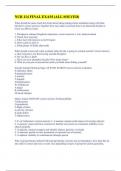Module I: Evolution 3
The Scientific Movements Leading to Evolutionary Psychology 3
Landmarks in the History of Evolutionary Thinking 3
Common Misunderstandings About Evolutionary Theory 6
Landmarks in the Field of Psychology 6
The New Science of Evolutionary Psychology 7
The Origins of Human Nature 7
The Core of Human Nature: Fundamentals of Evolved Psychological Mechanisms 10
Methods for Testing Evolutionary Hypotheses 12
Sources of Data for Testing Evolutionary Hypotheses 13
Identifying Adaptive Problems 13
The Inevitable Imperfection of Adaptation 14
Natural Selection Tinkers 14
Natural Selection Errs on the Safe Side 14
Traits Have Costs and Benefits 14
Evolved Traits Are Facultative 14
Gene-Culture Evolutionary Mismatch 14
Module II: Survival 14
Combating the Hostile Forces of Nature 14
Human Survival Problems 14
Food Acquisition and Selection 15
Shelter and Landscape Preferences 19
Combating Predators and Other Dangers: Fears, Phobias, Anxieties, and Adaptive Biases 19
Why Do People Die? 21
Module III: Sex 22
Women’s Long-Term Mating Strategies 22
Theoretical Background for the Evolution of Mate Preferences 22
The Content of Women’s Mate Preferences 23
Context Effects on Women’s Mating Strategies 25
How Women’s Mate Preferences Affect Actual Mating Behavior 26
Men’s Long-Term Mating Strategies 27
Theoretical Background for The Evolution of Men’s Mate Preferences 27
The Content of Men’s Mate Preferences 27
Context Effects of Men’s Mating Behavior 30
, Effect of Men’s Preferences on Actual Mating Behavior 31
Short-Term Sexual Strategies 32
Theories of Men’s Short-Term Mating 32
Evidence for an Evolved Short-Term Mating Psychology in Males 34
Women’s Short-Term Mating 35
Context Effects on Short-Term Mating 37
How Consumption Patterns Are Shaped by Sexual Selection 38
Module IV: Cooperation 38
Cooperative Alliances 38
The Problem of Altruism 38
A Theory of Reciprocal Altruism 38
Reciprocation Among Non-Humans 39
Social Contract Theory 40
Indirect Reciprocity Theory 41
Risk Pooling, Social Insurance, and Need-Based Transfers 41
Costly Signaling Theory 41
Positive Assortment 42
Emotions Involved in Cooperation 42
The Psychology of Friendship 42
Costs and Benefits of Friendship 44
Cooperative Coalitions 45
Four Explanations for the Evolution of Altruism 45
Module V: Aggression 46
Aggression and Warfare 46
Aggression as a Solution to Adaptive Problems 46
Why Are Men More Violently Aggressive Than Women? 47
Empirical Evidence for Distinct Adaptive Patterns of Aggression 48
Warfare 49
Do Humans Have Evolved Homicide Mechanisms? 50
Homo Sapiens: A Species Torn Between Love and War 51
Module VI: Hierarchies 52
Status, Prestige, and Social Dominance 52
The Emergence of Dominance Hierarchies 52
Evolutionary Theories of Dominance, Prestige, and Status 52
Men and Women Express Their Dominance Through Different Actions 54
Module VII: Culture 57
, Cultural Evolution and Evolutionary Cultural Psychology 57
Evoked Culture 57
Transmitted Culture 58
Culture-Gene Co-Evolution 59
Module I: Evolution
The Scientific Movements Leading to Evolutionary Psychology
Evolutionary psychology has the goal of understanding the human brain mechanisms in an
evolutionary perspective and pulls together findings from different disciplines of the human mind. It
focuses on four key questions:
• Why is the mind designed the way it is? What causal processes created, fashioned, or shaped
the human mind into its current form?
• How is the human mind designed? What are its mechanisms or component parts, and how
are they organized?
• What are the functions of the component parts and their organized structure? What is the
mind designed to do?
• How does input from the current environment interact with the design of the human mind to
produce observable behavior?
Landmarks in the History of Evolutionary Thinking
Evolution Before Darwin
Evolution refers to change in life forms over time. This idea was introduced by scientists long before
Darwin published his book “On the Origin of Species). Lamarck believed in two major causes of
species change:
• A natural tendency for each species to progress toward a higher form
• The inheritance of acquired characteristics
He thought that animals struggle to survive, which causes their nerves to secrete a fluid that enlarges
the organs involved in this struggle. A well-known example is that of giraffes, which evolved long
necks because they tried to eat from higher and higher leaves. These changes in their neck were
passed down to succeeding generations of giraffes. Cuvier proposed a theory called catastrophism:
Species are extinguished periodically by sudden catastrophes and then replaced by a different
species.
Structural similarities within the huge variety of species, fossil records and the similarity of
embryological development of different species all provided evidence for change over time and a
possible common ancestor. However, no scientists before Darwin proposed a theory that explains
how change might take place over time.
Darwin’s Theory of Natural Selection
Darwin’s theory of natural selection can be summarized on the basis of three components: variation,
inheritance, and differential reproductive success. Organisms vary considerably in their
characteristics and only some of these variations are inherited. Some organisms leave more offspring
because the inherited attribute serves the tasks of survival or reproduction. Differential reproductive
success describes the possession of heritable variants that increase an individual’s chances of survival
, and reproduction relative to others. The characteristics that reproduce more than others get passed
down to future generations at a relatively greater frequency.
Darwin’s second proposal was the theory of sexual selection. While natural selection focuses on
adaptations that have arisen as a consequence of successful survival, this theory focuses on
adaptations that arose as a consequence of successful mating. There are two primary ways in which
sexual selection can operate: (1) Intrasexual competition describes the competition between
members of one sex, while (2) Intersexual competition describes the preferential mate choice based
on desirable qualities in the opposite sex.
The Role of Natural Selection and Sexual Selection in Evolutionary Theory
Although natural and sexual selection are the primary cause of evolutionary change (and the only
known cause of adaptations), they are not the only causes of evolutionary change. Random changes
in the genetic makeup of a population, called genetic drift, are caused by several processes like
mutation, founder effects, and genetic bottlenecks. Founder effects occur when a small portion of a
population establishes a new colony and the founders of this colony are not genetically
representative of the original population. Genetic bottlenecks happen when a population shrinks
and the survivors only carry a subset of the genes of the original population.
Evolution by natural selection is not intentional but merely acts on variants that happen to exist.
Those animals who possess an adaptive trait simply have a greater chance of surviving and thus
passing on this trait to their offspring.
Evaluated relative to the human life span, evolution is gradual. It has taken dozens, hundreds,
thousands, and in some cases millions of generations for the process of selection to gradually shape
the organic mechanisms we see today.
The Modern Synthesis: Genes and Particulate Inheritance
Darwin believed that inheritance was blended (i.e., like mixing red and white color, which makes
pink). Mendel showed that inheritance is particulate: The qualities of the parents are passed on
intact to their offspring within genes.
A gene is defined as the smallest discrete unit that is inherited by offspring intact, without being
broken up or blended. Genotypes refer to the entire collections of genes within an individual and are
broken up with each generation, as each of us inherits a random half of genes from our mother’s
genotype and a random half from our father’s genotype. The specific half of the genes we inherit
from each parent is identical to half of those possessed by that parent.
The Modern Synthesis is a movement that discarded a number of misconceptions in biology and
confirmed the importance of Darwin’s theory of natural selection and put it on a firmer footing with
a well-articulated understanding of inheritance.
The Ethology Movement
The facts that behavior requires underlying physical structures and that species can be bred for
certain behavioral characteristics support the notion that the theory of natural selection is also
applicable to behavior. The first major discipline formed to study behavior from an evolutionary
perspective was the field of ethology, which is defined as “the study of the proximate mechanisms
and adaptive value of animal behavior”. It documented imprinting as one of its first phenomena, a
biologically pre-determined behavior in ducklings.
Ethologists were interested in four key issues, which have become known as the four “whys” of
behavior:






